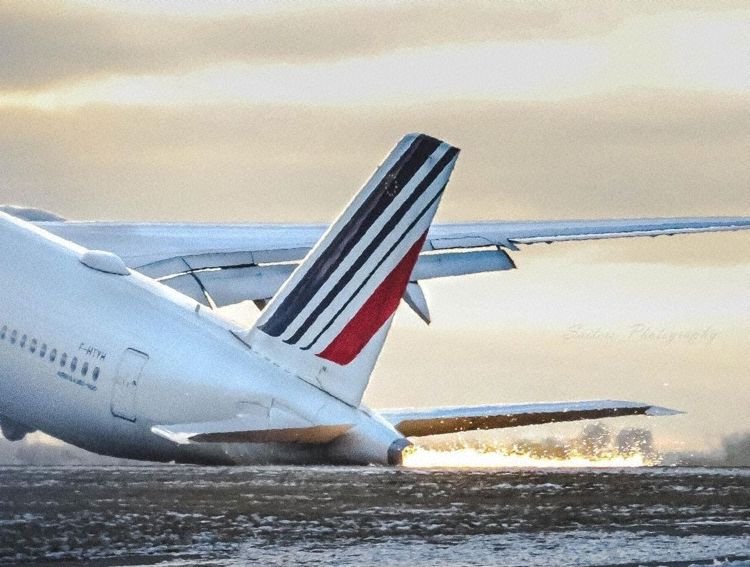- Joined
- Feb 22, 2021
- Messages
- 910
From The Aviation Herald.
Same runway they went off during the thunderstorm several years ago ( 9000 feet long ).
Winds were not an issue.
Accident: France A359 at Toronto on Jan 21st 2024, tail strike on landing/go around

 aviationsourcenews.com
aviationsourcenews.com
Don’t push forward, or pull back, after a bounce.
Go around if its a high bounce ( hold the attitude initially ).
Might be a good idea to discuss how to deal with bounce recoveries prior to descent ( even though it’s in the manual or pilots saw it in sim training ).
It’s really important that the PM ( pilot not flying ) call out when getting close to max landing pitch ( 7.5 / 10 degrees A320, 321 ). Once you reach that pitch , stop pulling back, or do a go around.
Same runway they went off during the thunderstorm several years ago ( 9000 feet long ).
Winds were not an issue.
Accident: France A359 at Toronto on Jan 21st 2024, tail strike on landing/go around
| By Simon Hradecky, created Monday, Jan 22nd 2024 11:18Z, last updated Monday, Jan 22nd 2024 11:26Z An Air France Airbus A350-900, registration F-HTYH performing flight AF-356 from Paris Charles de Gaulle (France) to Toronto,ON (Canada), was landing on Toronto's runway 24L when the aircraft bounced, increased the pitch and contacted the runway surface with its tail before climbing out to safety. The aircraft positioned for another approach to runway 24L about 15 minutes later, landed without further incident and taxied to the apron. There were no injuries, the aircraft sustained substantial damage however. Metars: CYYZ 212300Z 26010KT 15SM FEW030 FEW170 M05/M10 A3047 RMK SC1AC1 SC TR AC TR SLP333= CYYZ 212200Z 26009KT 15SM SCT030 SCT170 SCT250 M04/M10 A3047 RMK SC3AC1CI1 CI TR SLP331= CYYZ 212100Z 25016KT 15SM BKN030 M03/M09 A3046 RMK SC7 SLP328= CYYZ 212000Z 25011KT 15SM OVC030 M02/M08 A3046 RMK SC8 SLP327= CYYZ 211900Z 26009KT 15SM BKN030 M02/M09 A3045 RMK SC7 SLP326= CYYZ 211800Z 24007KT 15SM BKN030 M03/M10 A3046 RMK SC7 SLP329= CYYZ 211700Z 26007KT 210V270 15SM BKN032 M03/M10 A3048 RMK SC7 SLP335= |

Air France A350 suffers tailstrike on landing in Toronto
An Air France A350-900 has suffered damage in a tail strike during landing and go around at Toronto (YYZ) on Sunday January 21.
 aviationsourcenews.com
aviationsourcenews.com
Don’t push forward, or pull back, after a bounce.
Go around if its a high bounce ( hold the attitude initially ).
Might be a good idea to discuss how to deal with bounce recoveries prior to descent ( even though it’s in the manual or pilots saw it in sim training ).
It’s really important that the PM ( pilot not flying ) call out when getting close to max landing pitch ( 7.5 / 10 degrees A320, 321 ). Once you reach that pitch , stop pulling back, or do a go around.
Last edited:

